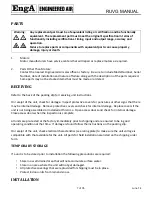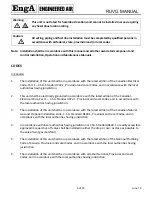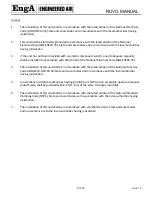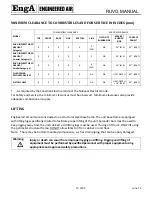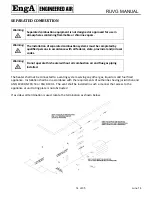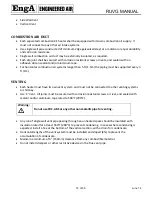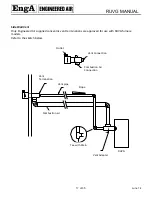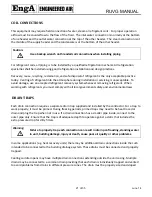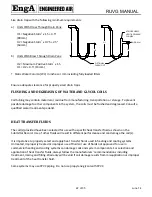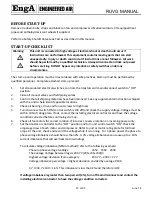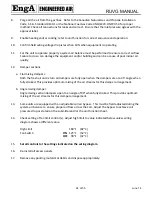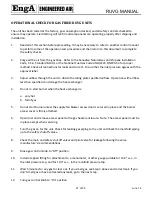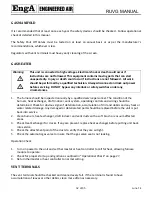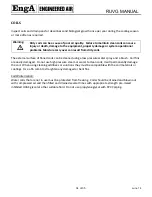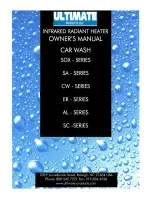
A
RUVG
MANUAL
21 of 35
June 14
COIL
CONNECTIONS
This
equipment
may
require
field
connection
of
water,
steam
or
refrigerant
coils.
For
proper
operation
airflow
must
be
counterflow
to
the
flow
of
the
fluid.
The
inlet
water
connection
is
normally
at
the
bottom
of
one
header
and
the
outlet
water
connection
at
the
top
of
the
other
header.
The
steam
connection
is
at
the
middle
of
the
supply
header
and
the
condensate
is
at
the
bottom
of
the
other
header.
Caution:
Use
a
backup
wrench
on
threaded
coil
connections
when
installing
piping.
For
refrigerant
coils,
all
piping
is
to
be
installed
by
a
qualified
refrigeration
mechanic.
All
refrigeration
specialties
shall
be
installed
using
good
refrigeration
installation
and
design
practices.
Recovery,
reuse,
recycling,
reclamation,
and
safe
disposal
of
refrigerant
is
the
only
acceptable
practice
today.
Venting
of
refrigerant
into
the
atmosphere
during
installation
or
servicing
is
unacceptable.
To
avoid
damage,
use
an
accepted
refrigerant
recovery
system
whenever
removing
refrigerant.
When
working
with
refrigerants
you
must
comply
with
all
local
government
safety
and
environmental
laws.
DRAIN
TRAPS
Each
drain
connection
requires
a
separate
drain
trap
supplied
and
installed
by
the
contractor.
For
a
trap
to
work
properly,
it
must
be
primed.
During
freezing
periods,
primed
traps
may
need
to
be
heat
traced
or
drain
and
plug
the
trap
when
not
in
use.
If
a
drain
connection
has
a
smaller
pipe
inside,
connect
to
the
outer
pipe
only.
Ensure
that
the
trap
is
of
adequate
depth
to
operate
against
a
static
that
includes
the
extra
pressure
drop
for
dirty
filters.
Warning:
Failure
to
properly
trap
each
connection
can
result
in
drain
pan
flooding,
standing
water
in
unit,
building
damage,
injury
or
death,
cause
poor
air
quality
or
other
problems.
In
some
applications
(e.g.
heat
recovery
units)
there
may
be
additional
drain
connections
inside
the
curb
intended
to
be
connected
to
the
building
drainage
system.
These
drains
must
be
connected
and
properly
trapped.
Cooling
coil
drain
pans
may
have
multiple
drain
connections
extending
outside
the
unit
casing.
Multiple
drains
may
be
connected
to
a
common
drain
providing
that
each
drain
is
individually
trapped
and
vented
to
avoid
problems
from
drains
in
different
pressure
zones.
The
drain
must
be
properly
sized
and
sloped.

